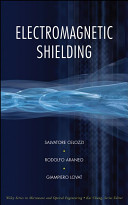Feromagnetic Materials and Hysteresis Loops
Ferromagnetic materials are paramagnetic materials. Below the Curie temperature ferromagnetic materials show spontaneous magnetization, and this means that the spin moments of neighboring atoms in a microscopically large region (called domain) result in a parallel alignment of moments. The application of an external magnetic field changes the domains, and the moments of different domains then tend to line up together. When the applied field is removed, most of the moments remain aligned, which gives rise to significant permanent magnetization. It is notable that other paramagnetic materials show antiparallel aligment of moments (antiferromagnetic materials): if the net magnetic moment is different from zero, the material is called ferrimagnetic.
[...]
Hysteresis loops can take different shapes, but a few parameters allow the properties of loops to be characterized. The first type of loop encountered is the major hysteresis loop, which is obtained by applying to a specimen a cyclic magnetic field H (with amplitude H) with values large enough to saturate the material. The ensuing change of the magnetization vector M, or the magnetic flux density B ¼ m0ðH þMÞ, is recorded along the field direction (components B and M, respectively). The section of the loop from the negative to the positive saturation is called the ascending major curve; the other half is called the descending major curve. The largest achievable amplitude of magnetization (in the limit H ! 1) is called saturation magnetization, MS. The magnetization amplitude that remains in the specimen after a large field is applied and then reduced to zero is the remanence, Mr. The coercive field (or coercitivity) HC is the magnetic-field amplitude needed to bring the magnetization from the remanence value Mr to zero; it measures the strength of the field that must be applied to a material in order to cancel out its magnetization. While saturation inductions are comparable in almost all the common materials, coercitivities span an astonishingly wide interval, varying from between 0.2 and 100 A/m for soft magnetic materials to between 200 and 2000 kA/m for hard magnetic materials [6]. The differential susceptibility x ¼ @M=@H is defined by the slope of the hysteresis curve at the considered point (i.e., for a certain value of H).
Notes:
How to magnetize metal.
Folksonomies: nature magnetization
Taxonomies:
/art and entertainment/visual art and design/design (0.515433)
/business and industrial/chemicals industry/plastics and polymers (0.500469)
/art and entertainment/radio (0.389285)
Keywords:
magnetization (0.970142 (negative:-0.371875)), significant permanent magnetization (0.887580 (neutral:0.000000)), spontaneous magnetization (0.733993 (neutral:0.000000)), major hysteresis loop (0.679916 (neutral:0.000000)), saturation magnetization (0.667096 (neutral:0.000000)), paramagnetic materials (0.659378 (neutral:0.000000)), largest achievable amplitude (0.639964 (neutral:0.000000)), ferromagnetic materials (0.634724 (neutral:0.000000)), magnetization vector (0.633672 (neutral:0.000000)), MS. The magnetization (0.616454 (neutral:0.000000)), magnetic field changes (0.587350 (neutral:0.000000)), microscopically large region (0.582309 (neutral:0.000000)), net magnetic moment (0.571502 (negative:-0.254161)), Hysteresis Loops (0.553180 (positive:0.412955)), major curve (0.542388 (negative:-0.233832)), hard magnetic materials (0.541448 (neutral:0.000000)), spin moments (0.443592 (neutral:0.000000)), magnetic-field amplitude (0.441887 (neutral:0.000000)), saturation inductions (0.403643 (neutral:0.000000)), Curie temperature (0.401643 (neutral:0.000000)), Feromagnetic Materials (0.401376 (positive:0.412955)), parallel alignment (0.364999 (neutral:0.000000)), antiparallel aligment (0.359888 (neutral:0.000000)), coercive field (0.357133 (negative:-0.432977)), different domains (0.354216 (neutral:0.000000)), magnetic flux (0.349486 (neutral:0.000000)), m0ðH þMÞ (0.346326 (neutral:0.000000)), common materials (0.345546 (neutral:0.000000)), different shapes (0.344921 (neutral:0.000000)), field direction (0.343643 (neutral:0.000000))
Entities:
Curie temperature:GeographicFeature (0.815741 (neutral:0.000000)), @M:TwitterHandle (0.815741 (neutral:0.000000))
Concepts:
Magnetic field (0.938035): dbpedia | freebase
Magnetism (0.752058): dbpedia | freebase
Ferromagnetism (0.712928): dbpedia | freebase
Hysteresis (0.607087): dbpedia | freebase
Paramagnetism (0.564110): dbpedia | freebase
Magnetic moment (0.536322): dbpedia | freebase
Permeability (0.485696): dbpedia | freebase | yago
Fundamental physics concepts (0.435223): dbpedia





